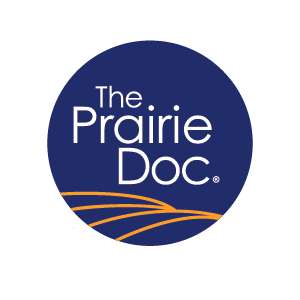Nurturing Active Childhoods in a High-Tech World

Long before children say their first words or pick up a pencil, they’re learning through their bodies. They kick, reach, roll, crawl and explore - hardwired to interact with the world through movement. From the very beginning, motor and sensory experiences are how babies discover their environment and how their brains begin to grow and organize.
Simply put, our bodies in motion are the vehicles through which we learn. When children move, their brains light up. Their senses, muscles, emotions and attention systems all come online and begin working together. Through active exploration, children build the foundations of their sensory, perceptual and cognitive systems.
Movement and imaginative play stimulate both brain and body, supporting not only strength and coordination but also emotional regulation, adaptive behaviors and social connection. A child building a tower of blocks isn’t just learning fine motor skills; they’re developing attention, problem-solving and perseverance. Free play fosters communication, cooperation and confidence. Movement is how learning begins … and how it continues to unfold.
Yet despite all we know about the power of movement, children today grow up in an environment where active play is often displaced by screen time. Screens are nearly unavoidable and are often used to entertain, educate or soothe. For many families, technology helps manage the demands of modern life. But when screen use regularly replaces hands-on, movement-rich experiences, opportunities for growth are lost.
A child passively watching a screen misses the sensory variety, trial-and-error learning and face-to-face interaction that come from real-world play. Over time, this shift can influence motor skills, attention, emotional regulation, sleep and readiness to learn, which are essential for thriving in school, relationships and everyday routines.
The American Academy of Pediatrics recommends that children under 18 months avoid screen use altogether, and that children ages 2–5 be limited to no more than one hour of high-quality content per day. These guidelines aren't about restriction for its own sake; they reflect what we know about how children learn best - through movement, play and real-world interaction.
Movement is also one of the most reliable indicators of healthy development. Nearly 9 out of 10 young children in the U.S. meet national physical activity guidelines. This number drops sharply with age. By 6 to 17 years, only about a quarter of children meet these standards. As screen time increases and free time shrinks, children’s need for movement can quietly go unmet.
This steady trend of rising screen use and declining physical activity doesn’t mean we need to eliminate technology. Rather, we need to be more intentional about preserving time for play. Supporting active childhoods means prioritizing daily opportunities for whole-body movement, open-ended exploration and connection. That might look like a walk after dinner, dancing in the kitchen, building a blanket fort or inviting your child to help prepare a meal.
As pediatric physical therapists, educators and parents, we see the impact of movement every day. Children don’t need expensive equipment or curated experiences. They need time, space and encouragement to move through their world and learn as they go. Fostering imagination, exploration and meaningful interactions with peers and caring adults helps children grow into strong, curious and resilient individuals.
For guidance on creating a balanced media plan, visit:
https://www.healthychildren.org/English/media/Pages/hhh.aspx
Patti Berg-Poppe is a physical therapist and professor and chair of USD’s Department of Physical Therapy, where she also directs the Program for Advancing Early Childhood Intervention (PACE-i). She has extensive experience in pediatric physical therapy and early intervention, with a focus on preparing future professionals to support development through play, movement and family-centered care.
Hsin-yi “Tanya” Liu is a pediatric physical therapist and researcher with expertise in early childhood development, mobility and assistive technology. She has practiced in both Taiwan and the United States and currently serves as assistant professor within USD’s Department of Physical Therapy. Her work focuses on how play, movement and adaptive tools support motor and social development in children.
Follow The Prairie Doc® at www.prairiedoc.org, Facebook, Instagram, YouTube, and Threads. Prairie Doc Programming includes On Call with the Prairie Doc®, a medical Q&A show (most Thursdays at 7pm streaming on Facebook), 2 podcasts, and a Radio program (on SDPB), providing health information based on science, built on trust








